
Carving a scroll - step by step - part XI
July 1, 2009 at 12:05 AM
Now I will shape the chin of the pegbox, mine is in the form of a half circle, following the Cremonese School, but some may be more oval shaped:
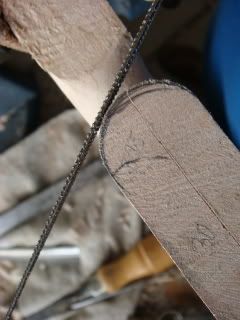
Now the chamfer, I'll do this with a small coarse file and refinish with a scraper. Keep the file in the same position, the chamfer may not be rounded or finished with sandpaper:
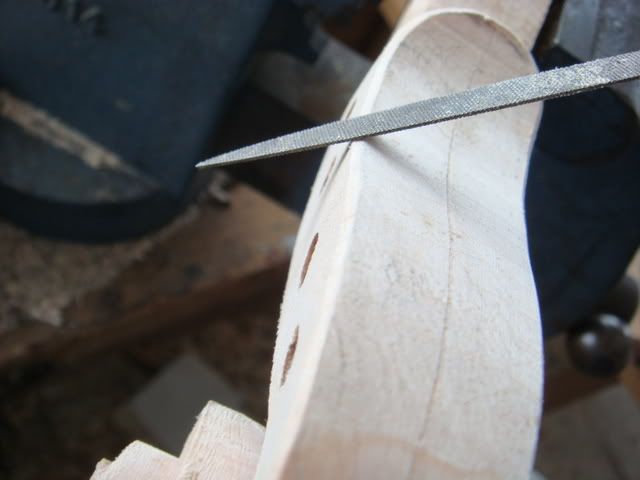
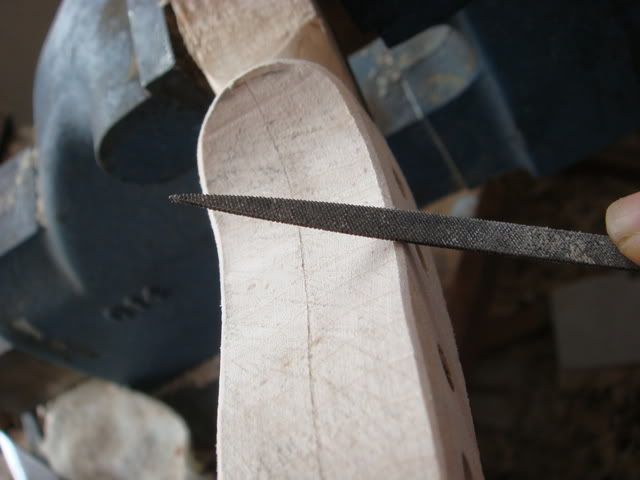
The two lines of the chamfer may run parallel, that's quite quite important. Here now I'm working with a small gouge to undercut the turns and reach the inner line of the chamfer.
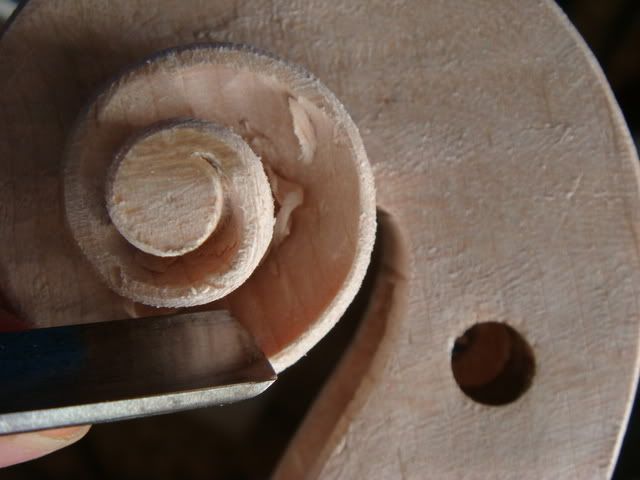
In Italian the chamfer is called "nastrino", that is, little ribbon, and I like the idea of a little ribbon runing through the scroll.
The chamfer in old instruments may have become emaciated and desfigured by the abrasion of the player's hand, it's hard to find a Del Gesù or a Stradivari that has preserved and crip chamfers on the scroll.
The chamfer varies in width, depending on its place. It's a bit wider in the chin region and in the end of the turns, on the eye. Here I'm making a narrow chanfer in the eye region:
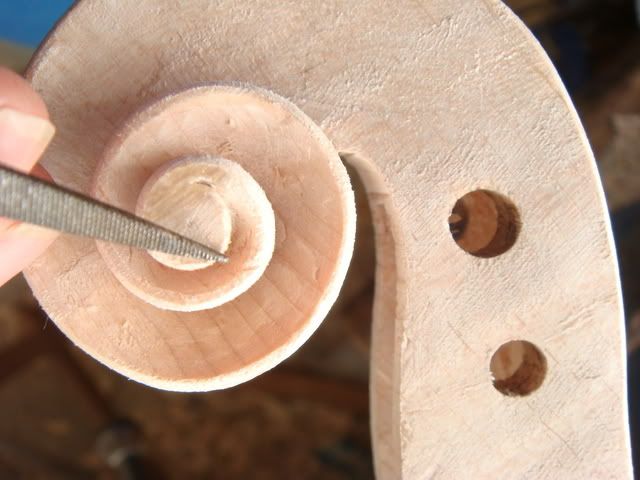
Here I'm undercutting again, preserving the inner line of the chamfer:
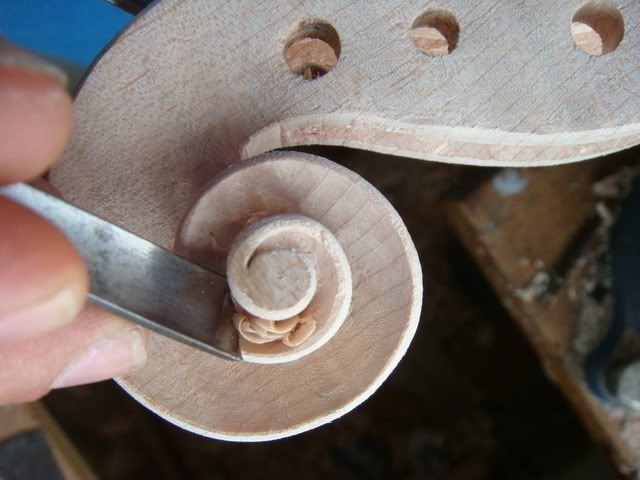
If you want, you may mark the lines of the chamfer with a simple marking tool like this. It's a scalpell knife glued in a piece of wood with sewing line and super glue. I'm not using this tool in this scroll, but I used it in the past:
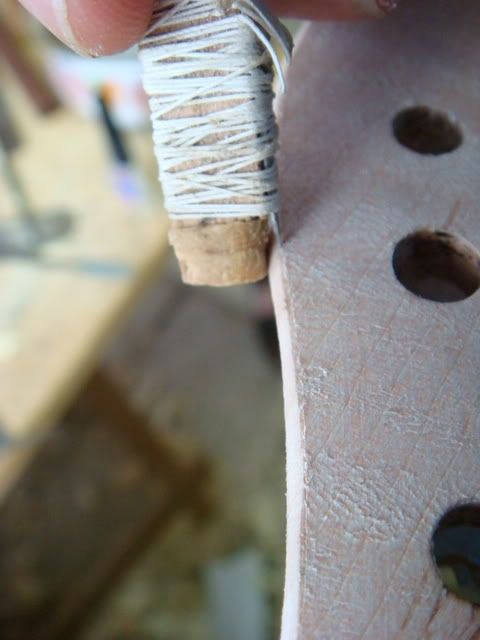
This entry has been archived and is no longer accepting comments.
Violinist.com is made possible by...
Dimitri Musafia, Master Maker of Violin and Viola Cases
Johnson String Instrument/Carriage House Violins
Subscribe
Laurie's Books
Discover the best of Violinist.com in these collections of editor Laurie Niles' exclusive interviews.

Violinist.com Interviews Volume 1, with introduction by Hilary Hahn

Violinist.com Interviews Volume 2, with introduction by Rachel Barton Pine






